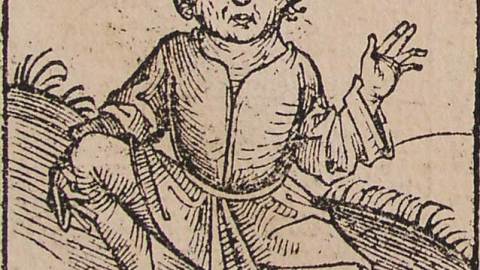“As a Man Is, So He Sees”

“I see Every thing I paint In This World, but Every body does not see alike,” wrote William Blake. “The tree which moves some to tears of joy is in the Eyes of others only a Green thing that stands in the way.” That’s a fact of life, Blake believed. “As a man is, So he Sees. As the Eye is formed, such are its powers.”
He was right, and news last week on both the race and gender fronts brought reminders of why, and why it’s important.
First up, the study by Eugene Caruso and colleagues at the University of Chicago, in which 221 students looked at different photos of President Obama, and proved divided about which ones were the most true to life. Liberals chose photos in which the President’s skin looked lighter; conservatives picked images in which he looked darker. In a later experiment, with photos of an unknown face, students once again chose lighter-skinned images of a supposed candidate if they thought he agreed with their politics than if they thought he did not.
This study got a lot of coverage last week (Ed Yong has a fine account here), much of which emphasized the distorting effect of ideology. For instance:”a person’s political views cause them [sic] to see with a tinted perspective,” as Discover’s news blog put it.
I think that’s exactly backwards. This study isn’t evidence for a rare form of political glaucoma, messing with our usual sharp-eyed clarity about skin tones and other traits. Instead, it’s evidence that there is no sharp-eyed clarity. This is one more indicator that people don’t see other people objectively at all — that our opinions, stereotypes, politics, hopes and fears shape all our perceptions of each other.
Which brings me to news item number 2: the question of whether the South African running champion Caster Semenya should be allowed to continue competing as a woman, given that her anatomy includes organs of both genders. Semenya’s external sexual traits are female; however, as Ariel Levy reports in the November 30 New Yorker, Semenya, according to leaked reports about recent medical tests, also has two undescended testes. If those stories are true, and if testosterone from those gonads are the cause of her athletic success–big ifs, especially the latter–then the issue for the International Association of Athletics Federations is whether Semenya has an unfair advantage against other women athletes.
As Levy notes, the resolution will have to be decided by committees. That’s because the boundary between male and female is not obvious and it is not dictated by physical facts. For the one to four percent of people born with “ambiguous” sexual characteristics, gender is a judgment call. This is not exotic “queer theory” dusted off from the 1990’s bookshelf. It’s a simple fact, and it has come up a lot in the realm of sports, as I’ve written here. (By the way, the linked article refers to the Y “gene” instead of the Y chromosome. The mistake was inserted by an editor.)
If you are impatiently telling yourself that exotic exceptions don’t disprove general rules about black and white, male and female, you’re right, but you’ve missed the point. What ambiguous people teach is not that our categories are always wrong, but rather that our categories are always made. People don’t perceive a physical world and then distort it with emotion and politics and stereotypes. Emotion and politics and stereotypes are a part of perception, just as physical facts are. We don’t see through distorted lenses; we see through the only lenses we have. As we are, so we see.
A political process will decide if Semenya is female–by the standards of today’s international athletics (which are different than those of 40 years ago). That’s because a person’s femaleness is not a purely biological fact. And people see different skin tones on the same President because skin color isn’t a purely biological fact either As Levy writes, we could divide sports competitions by weight class instead of by sex. Similarly, we could study the differing IQs and salaries of supertasters compared to those of ordinary-tongued people (the difference between people with extraordinary taste sensitivity and others is biological and genetically transmitted, so the categories are as sound as any in science). If, instead, we divide IQ scores by into Black and White, that’s a decision we’ve made about how to sort people. It’s not dictated by facts of nature. As the Eye is formed, such are its Powers.
It’s “in” today to knock the “blank slate” model of the mind–which claimed there was no such thing as human nature. But theories about race and sex that leave out the theorist are no better. They assume that history, culture and the psyche have no effect on the ideas and perceptions of the scientist. Which is just a way of replacing one blank slate with another.
Human behavior needs a “no blank slates” approach. It needs observers who respect facts, but who also respect that they are a part of what they’re trying to explain.





